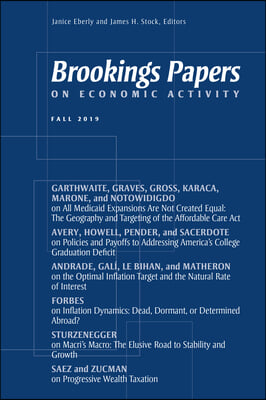他们在想什么?冷热市场中的购房者行为:十年回顾
IF 2.8
3区 经济学
Q1 ECONOMICS
引用次数: 1
摘要
摘要:本文是对2012年我们与卡尔·e·凯斯在《布鲁金斯学会经济活动论文》上发表的一篇论文的更新。本文分析了我们对美国购房者的年度问卷调查数据,以了解他们对未来房价变化的预期。与十年前的调查结果一样,我们再次看到了价格快速上涨的时期。我们发现,购房者通常消息灵通,他们的短期预期是保守的,通常对实际房价的年复一年变化反应不足。从他们的长期(十年年化)房价预期中可以看出房地产泡沫。2007-2009年危机之前的长期繁荣与公众对投机泡沫理解的改变有关。在这轮长达十年的反弹的最初几年,短期和长期预期都与实际价格变化不符。自2013年以来,大多数地区的长期预期与短期预期和实际价格变化趋于一致,这三个系列的变化都是同步的。随着2019冠状病毒病的爆发,2021年实际升值和预期升值再次出现分歧。然而,这一次,短期预期大幅高于长期预期,但仍远低于实际升值幅度。买家认为市场即将放缓,但尚未成为现实。本文章由计算机程序翻译,如有差异,请以英文原文为准。
What Have They Been Thinking? Home Buyer Behavior in Hot and Cold Markets: A Ten-Year Retrospect
ABSTRACT:This is an update of a paper that we published with Karl E. Case in Brookings Papers on Economic Activity in 2012. The paper analyzes data from our annual questionnaire survey of US home buyers to understand their expectations for future home price changes. We again see a period of rapid price increase as we did in our surveys a decade ago. We find that home buyers were generally well informed, and their short-run expectations were conservative, typically underreacting to the year-to-year changes in actual home prices. Housing bubbles can be seen in their long-term (annualized ten-year) home price expectations. The long boom that preceded the 2007–2009 crisis was associated with changing public understanding of speculative bubbles. During the early years of this decade-long rebound, both short- and long-term expectations were out of line with actual changes in prices. Since 2013, long-term expectations have converged with short-term expectations and actual price changes in most locations, and all three series have moved in synch. With the onset of COVID-19, in 2021 actual and anticipated appreciation diverged once again. This time, however, short-term expectations surged above long-term expectations but remained far below actual appreciation rates. Buyers presumed a coming slowdown in the market that has yet to materialize.
求助全文
通过发布文献求助,成功后即可免费获取论文全文。
去求助
来源期刊

Brookings Papers on Economic Activity
ECONOMICS-
CiteScore
10.10
自引率
0.00%
发文量
12
期刊介绍:
The Brookings Papers on Economic Activity (BPEA) is a semi-annual academic conference and journal that pairs rigorous research with real-time policy analysis to address the most urgent economic challenges of the day. Working drafts of the papers are presented and discussed at conferences typically held twice each year, and the final versions of the papers and comments along with summaries of the general discussions are published in the journal several months later. The views expressed by the authors, discussants and conference participants in BPEA are strictly those of the authors, discussants and conference participants, and not of the Brookings Institution. As an independent think tank, the Brookings Institution does not take institutional positions on any issue.
 求助内容:
求助内容: 应助结果提醒方式:
应助结果提醒方式:


